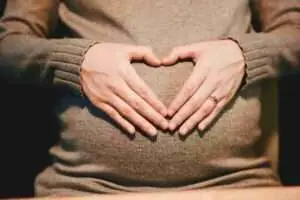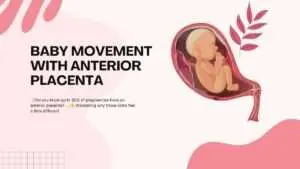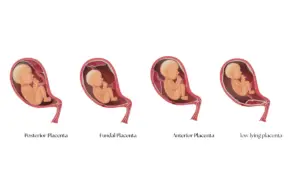The reasonable expectation for conceiving if you have sex after ovulation
Of course! After ovulation, pregnancy is still possible, particularly if you have sex within 12 to 24 hours of the egg being released. The five days that precede ovulation and the actual day of ovulation make up the fertile window, which lasts for roughly five to six days. Generally speaking, the chances of becoming pregnant after ovulation are minimal. An earlier study suggested that the chances might range from 0% to 11% one day after ovulation, and there hasn’t been any evidence to refute this.
But don’t let these chances deter you from engaging in sexual activity! You still have reasons to engage in sexual activity even if you think you’ve ovulated. First off, there’s a chance you’re not exactly correct about the day you ovulate. Second, engaging in sexual activity following fertilization may raise your chances of becoming pregnant.
Getting Around on the Fertility Journey: Knowing When and How to Conceive
It’s important (though seldom recognized) to have sex before ovulation for the best odds of conception. A common misconception is that post-ovulation sexual activity promotes pregnancy more. Sperm can live for several days in the cervix and fallopian tubes, but an egg needs to be fertilized soon after release, thus it is best if sperm are present when the egg is released. According to recent studies, the day before and the day of ovulation are the best times to conceive. Although the chance of becoming pregnant drops after ovulation, the precise odds are yet unknown.
Odds have been found to vary, ranging from 0% to 11% one day after ovulation to 21% to 35% one day before ovulation. A more recent study, however, shows that the probability is highest on day 13, the day before ovulation, especially in those who have regular menstrual cycles. It is noteworthy that these numbers are derived from a single occurrence of sexual activity during the fertile window. Sexual activity both before and following ovulation can greatly increase the chances.
Possible Misunderstandings When Figuring out Your Ovulation Day
It’s critical to recognize that there may be inaccuracies in calculating the day of ovulation. Since most ovulation prediction techniques are not 100% accurate, errors in determining the precise timing of ovulation are frequent. Try again, even if you think you may have missed your reproductive window and ovulated already. There’s always a chance you’re within that window. You can use a variety of techniques to determine when you are most fertile, including recording changes in cervical mucus, using ovulation prediction tests, using wearable fertility monitors, and monitoring your body’s basal temperature. Finding your fertile window more precisely can be achieved by combining different approaches. For example, a positive ovulation prediction test combined with the observation of viable cervical mucus can increase confidence for the optimal period for conception.
A realistic method is to cover all the bases by having regular sex every day or every two days from the final day of your menstruation until a day or two after your basal body temperature rises. Regular sexual activity throughout the month might also be advantageous and improve sperm quality. Even though body basal temperature (BBT) charting is frequently regarded as the most accurate technique, recording and interpreting BBT data can be error-prone. Only 22% of the time, research found that BBT charting accurately predicted the day of ovulation. Urinary hormone LH measures, which are frequently used in conjunction with ovulation predictor tests, can provide findings that are over 90% accurate, although they do need continuing kit or test strip purchases.
Mucus changes around the time of ovulation
Your vaginal discharge may vary during ovulation, which usually happens in the middle of your menstrual cycle. During this phase, the discharge usually has an egg-white-like consistency and is transparent, elastic, and slippery. This kind of discharge is thought to be fertile mucus and suggests a higher chance of pregnancy.
Vaginal discharge often changes in composition after ovulation, when the likelihood of getting pregnant decreases. It could turn hazy, thicken, or even completely disappear. Your menstrual cycle’s hormonal swings are the cause of this transformation. Keeping an eye on these variations in vaginal discharge might help you better understand your body’s reproductive rhythms by acting as a natural predictor of your fertility window.
The Possible Impact of Sex After Ovulation on Implant Success
Sex following ovulation may facilitate the baby’s adjustment. Even if you’ve already ovulated, there’s still good reason to be intimate with your partner. A study examined the relationship between sex and utilizing reproductive treatments to become pregnant. They had two sets of couples: one group engaged in sexual activity at the moment when the fertilized egg was being placed, and the other group abstained from sexual activity.
Both groups’ initial chances of becoming pregnant were comparable. However, compared to the group that didn’t have sex (7.69%), more people from the group that had sex around the time the fertilized egg was placed were still pregnant (11.01%) when the results were examined later, at 6 to 8 weeks. This raises the possibility that the material disclosed during intercourse could contribute to the good development of the fertilized egg.
While more recent research hasn’t always supported this, a 2020 study found that, particularly in individuals without fertility treatments, having intercourse around the time the fertilized egg sticks doesn’t significantly alter the likelihood that it will stick and become pregnant. Therefore, it appears that having sex soon after ovulation is probably not harmful and won’t affect the fertilized egg’s ability to survive.
What impacts the ovulation stage?
Our bodies are complex self-healing systems that are customized according to our genetic makeup and varied environmental exposures. Reproductive hormone levels are influenced by the interaction of genetics and environmental circumstances, which in turn affects the probability of conception. The complex terrain of reproductive health is shaped by an individual’s genetic composition as well as their experiences in the environment, demonstrating the customized nature of fertility dynamics. For those navigating the process of becoming pregnant, understanding these characteristics is essential since it enables a customized strategy for dealing with possible obstacles and maximizing the success of conception.











